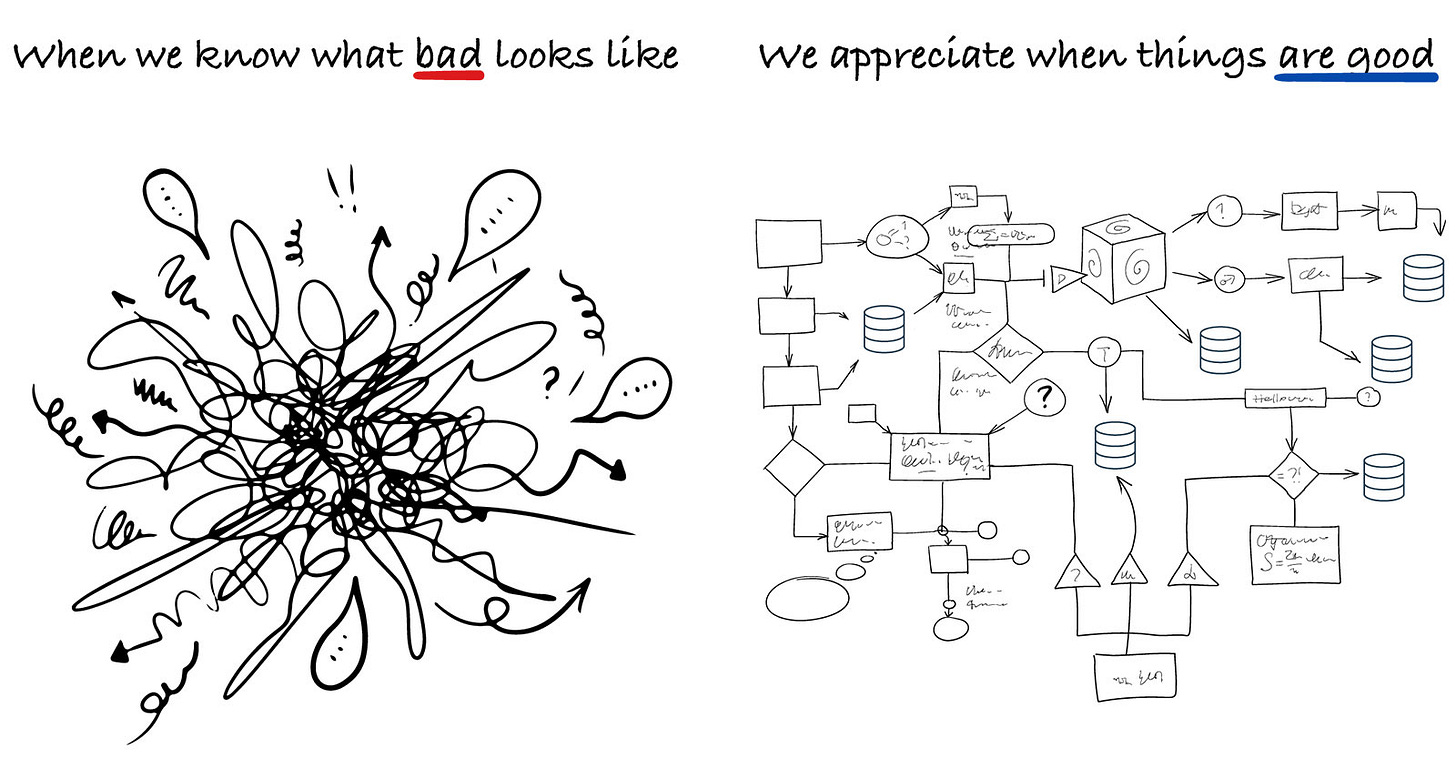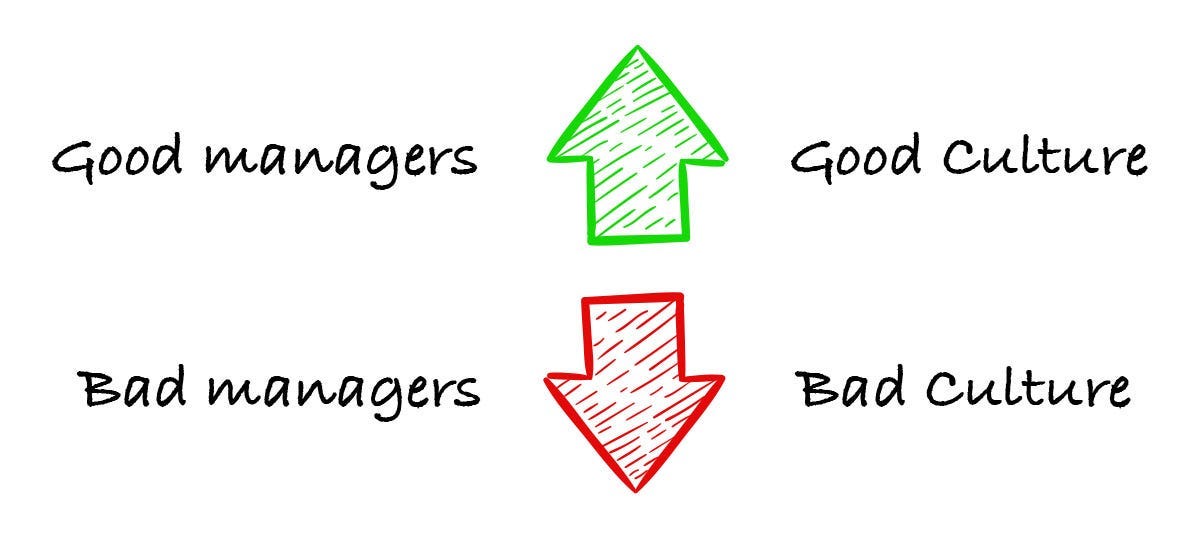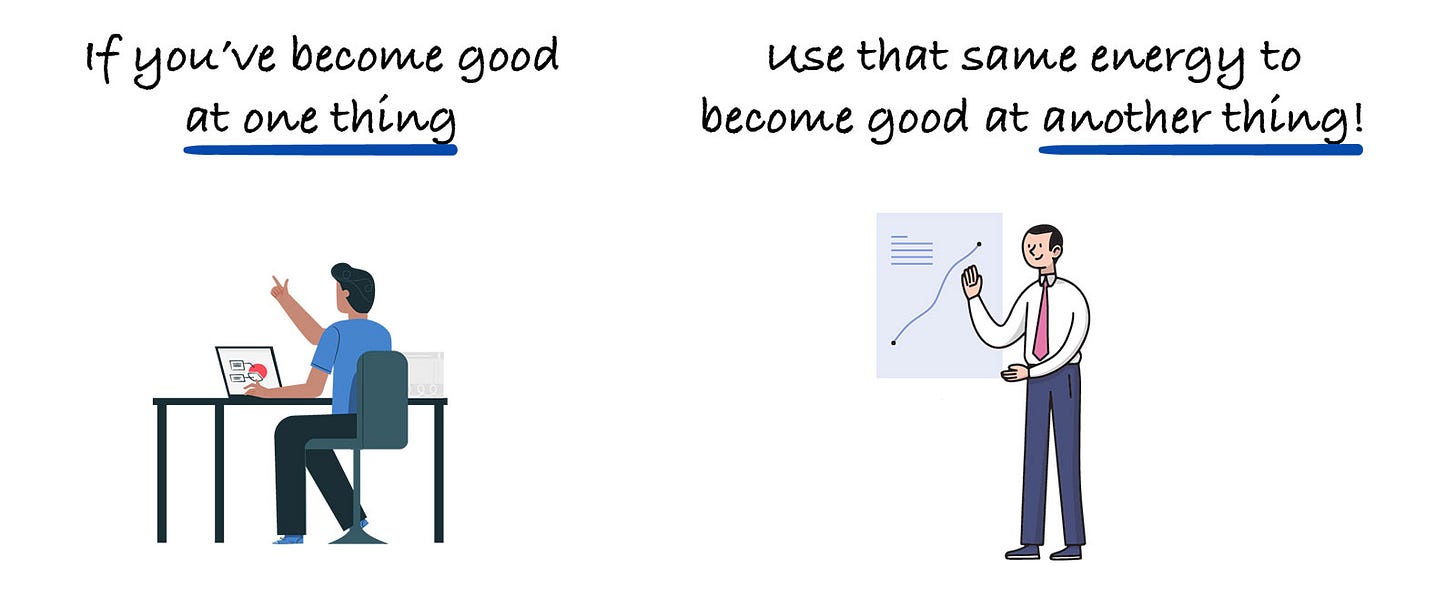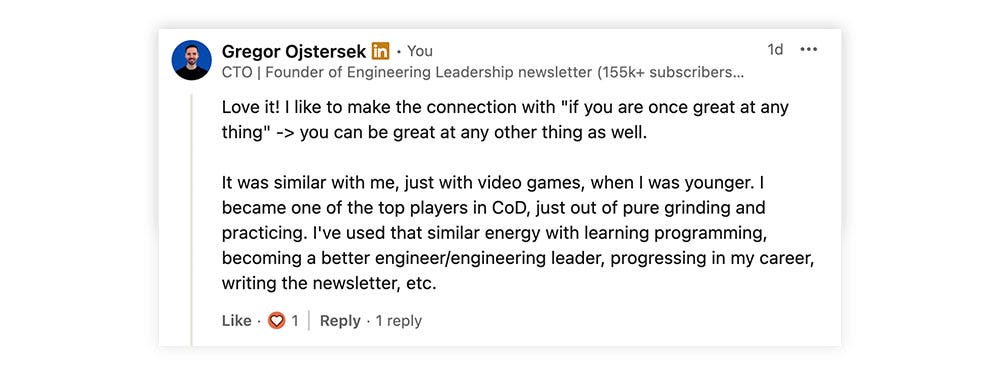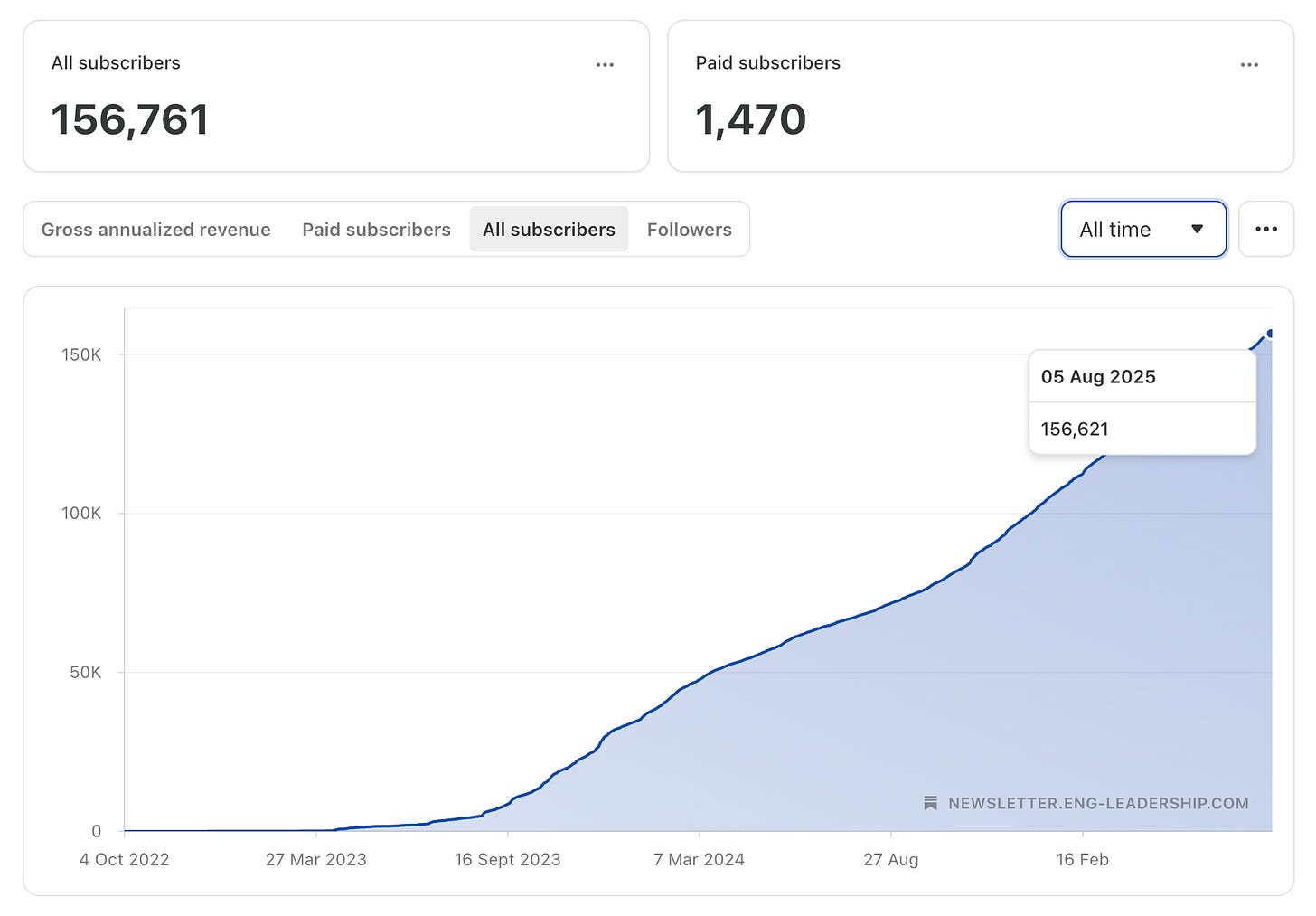Seeing the Bad Helps You Spot the Good
3 stories -> Knowing what bad looks like makes it easier to spot what good looks like!
Intro
We often try to avoid negative experiences or uncomfortable truths. However, the reality is that without the bad, it’s much harder to recognize the good.
Disappointment teaches us what we truly value.
Frustration reveals what we truly care about.
Difficult people or situations show us the importance of kindness, honesty and patience.
When we learn to pay attention to what’s wrong, we become better at noticing what’s right → we also start appreciating it more!
This is an article for paid subscribers, and here is the full index:
- 1. In one of my student jobs, I had a bad experience with a manager
- I went to HR and told them about my experience and handed over the letter of resignation
- 2. Looking back at the first code I wrote, first project I finished, first LinkedIn post and first newsletter article I wrote
🔒 3. I had a great manager when I grew from Sr. SWE to Team Lead and Engineering Manager, but they left and got a reality check
🔒 Having both the good and bad experiences is what has helped me to do well in my next roles
🔒 The key message from this article
🔒 Last words
Let’s get straight to the first story!
1. In one of my student jobs, I had a bad experience with a manager
This was even before I knew that programming is a really fun thing to become good at. I remember it like it was yesterday. I interviewed for a job where I’d be helping with printing and designing printable materials for a well-known retail store.
The interview went well, nothing out of the ordinary and I received an email that I was hired for the position.
The first red flag was when I came there → the person who I was replacing was still there and they onboarded me and showed me how everything worked.
I asked him what the reason was for him to leave this role. He mentioned that he has some other things he wanted to pursue, but I noticed some subtle things he mentioned here and there that I should be careful dealing with the manager.
The funny thing, looking back, is that the manager was quite normal right until the person who was onboarding me left the company. Then things started to change.
I was still quite new to the job and didn’t understand everything in detail, so I naturally made some mistakes and I started to notice that my manager was blaming me for every mistake I made.
They were always in a negative mood and whenever something didn’t go exactly as they imagined, they’d start shouting and yelling, without giving any direction on what would be the right way to do a certain thing.
It even came to the level where I’d get blamed for every small mistake and threatened that I’d get fired if I made one more mistake.
I was looking for a new job quite soon after I started and in about a month, I’ve gotten a new one.
I went to HR and told them about my experience and handed over the letter of resignation
Even though I believe nothing really changed after I did that, at least I was able to get some sort of closure and hope to potentially make it at least a bit easier for the new person coming in.
It also felt pretty good as I had the feeling that my manager thought they were invincible and that they could get away with everything.
But what this experience really taught me is:
When you understand how it feels when you have a bad manager → you appreciate much more when you have a good manager!
2. Looking back at the first code I wrote, first project I finished, first LinkedIn post and first newsletter article I wrote
First code that I wrote
Some of the first code that I wrote was with Java and I didn’t enjoy programming back at that time, as I noted in my story of how I became an engineer and grew to CTO. I hardly understood what I was doing.
And I also remember when we needed to write a program on a piece of paper for an exam in high school. I seriously didn’t understand it, and was partially “winging” it, as that wasn’t really my interest back in the day.
This is a good reminder for me that I was once a complete beginner and didn’t know what I was doing and then I was able to learn programming and work professionally for many different companies around the world.
This is an example of a win that you should always have in mind, especially when you feel like the impostor syndrome is kicking in. Where you have been (complete beginner) and where you are now.
It gives you self-confidence to pursue other things with similar energy.
And I am a big believer that if you have been good at one thing, you can be good at another thing as well.
First project I have finished
I remember making many mistakes, thinking that technical execution is everything and that communication is “not that important”. These were my thoughts having my first real freelance client.
It turned out I had developed something that was not needed and not expected. The client had a completely different picture of what outcome they wanted.
That’s how I learned how important it is to:
Understand the needs and the challenges that your client is facing.
Find out what is the solution that is going to be the best fit for them and present it.
Prepare the plan for execution and make sure that the client understands it and also confirms it (the best is to have everything written down).
Make sure to regularly communicate instead of doing “Big Bang” reveals → they rarely work.
After the first project, I knew that it couldn’t get worse than that!
Without making these first mistakes, I wouldn’t be able to get better and improve!
First LinkedIn post
This is how one of the first LinkedIn posts, when I started actively posting on LI, looked like (almost 3 years ago):
Even though there wasn’t a lot of engagement when I started, I kept going and over time, I got better at writing them. After a lot of trial and error, I started writing posts that were more concise and easier to understand.
So, the key is to get started → persevere → learn from it and get better!
Without starting and “being bad”, you never become good at it. Persevering and being consistent is what enabled me to grow from around 1k followers all the way to 67k+.
First newsletter article
A similar case also with writing my first newsletter articles. They look totally different than how I write right now and that’s a great thing! I am proud that I have started and that I constantly look for ways to make things better and improve.
If you are a paid subscriber, you can check one of my first articles here:
And also, as a paid subscriber you have full access to the archive as well!
I’ve learned a lot in almost 3 years of writing this newsletter and I am always thinking about how I can improve and get better at presenting complex topics in a simple way.
We’ve now gone all the way to 156k+ subscribers and 1470 paid subscribers!
That is the right way to look at it:
Embrace that you’ll not be the best when you start, but then you’ll get much better over time!


